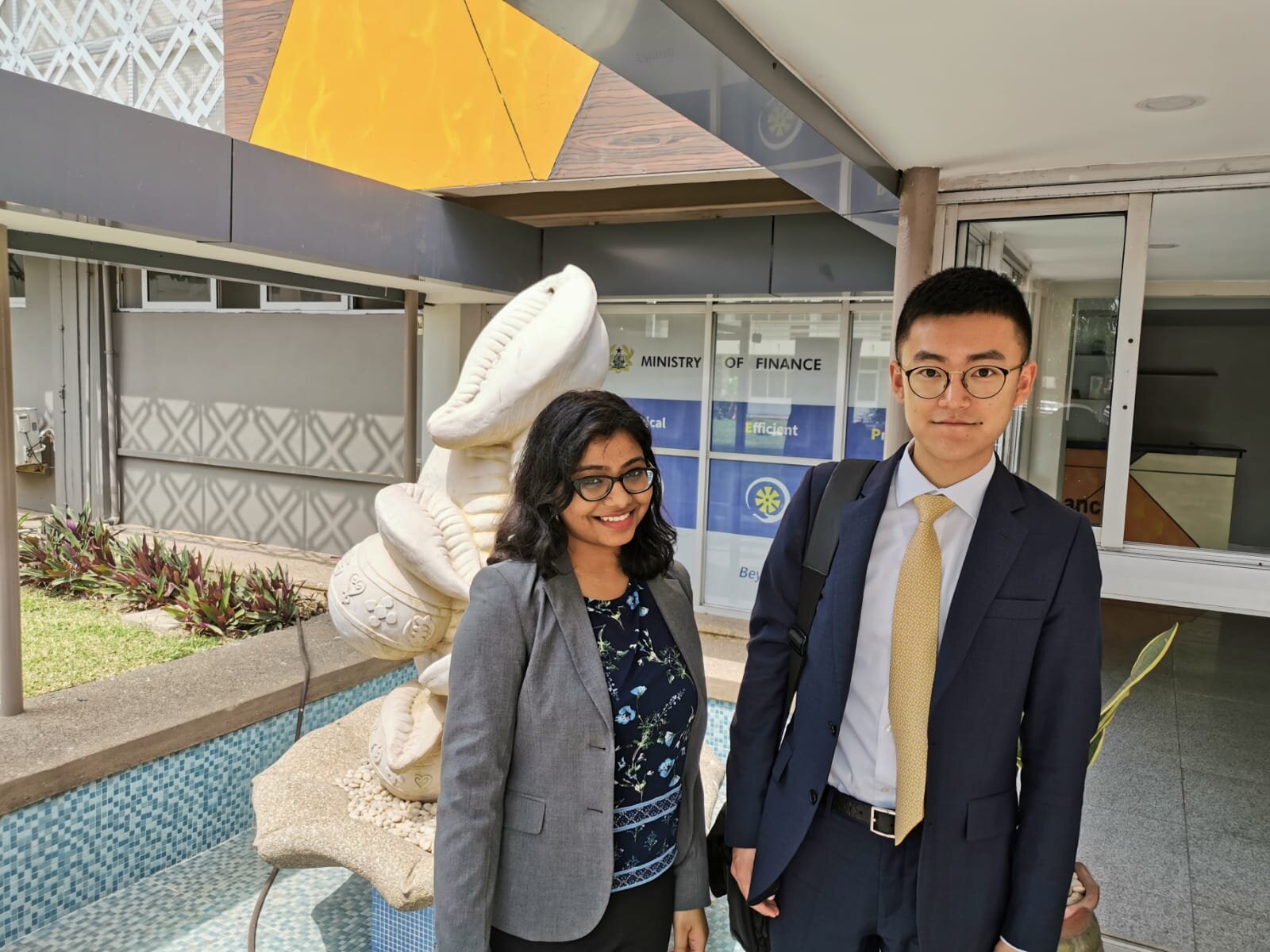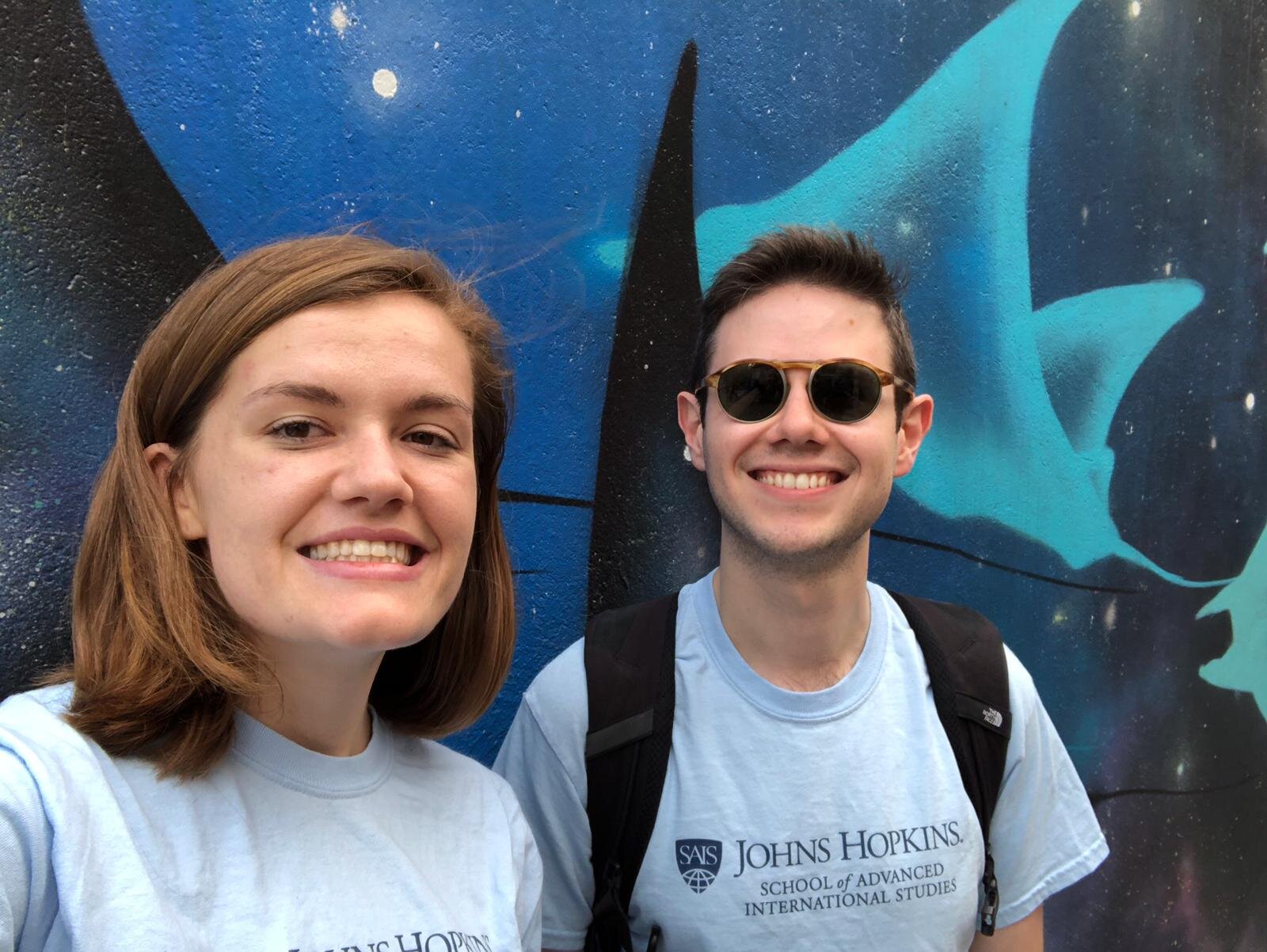BY ADYASHA MOHANTY, JILL CARTER, MAXWELL JONES, AND TIANLANG GAO
Adyasha Mohanty, Jill Carter, Maxwell Jones, and Tianlang Gao are second-year International Development students who traveled to Ghana, Cameroon, and Brazil to gain a better understanding of the landscape of public-private partnerships for infrastructure financing and provision in these countries. The team is working with the World Bank’s Private-Public Infrastructure Advisory Facility (PPIAF).
The IDEV Practicum allows students to work directly with public, private and non-governmental organizations as a capstone to their graduate studies. The 2020 IDEV Practicum Blog is a seven-part series that chronicles the travels of IDEV students who take on client projects over winter break.
Of late, the developing world has begun making concerted efforts to attract private sector participation in infrastructure financing and provision. The World Bank’s Public-Private Infrastructure Advisory Facility (PPIAF) serves as a global facility dedicated to providing support activities in diagnostics, capacity-building and pipeline development in the public-private partnership (PPP) landscape. It has categorized countries in terms of the level of readiness of their PPP institutions. Yet, much work remains in identifying the key drivers of successful delivery and consistency of PPPs in the infrastructure sector of these countries. This year, our practicum team has been working with the PPIAF to address this specific need, as well as to recommend ways in which the PPIAF can improve its PPP institution-building support activities on a global scale. After performing a desk review of qualitative and quantitative information on a number of databases and PPIAF activities available publicly and in the PPIAF internal database, the team determined the countries that formed the sample of our fieldwork over winter break.
Ghana and Cameroon
Ghana is an “emerging market” based on the PPP readiness categorization proposed by the World Bank - its maturity level representing an intermediate case in the countries that formed our research sample. On the other hand, Cameroon has an established legislative framework, but the PPP units lack transactional and enforcement authorities. Beyond the sample of our field research, the PPIAF looked for success stories and innovations that can be applied to other countries.
Our fieldwork in Africa took two of the team members to the Ghanaian capital of Accra - a city dotted with monuments, museums and shopping districts - and the cities of Douala and Yaoundé in Cameroon, both of which are area melting pot of culture, along with financial and political significance. In between trying out the traditional Ghanaian jollof rice and the French-influenced Cameroonian delicacies, we conducted in-depth interviews with the senior management and technical minds within both the public and private sector in the PPP landscape of the two countries. We also arranged meetings with the local World Bank country management offices to seek their perspective on country-specific elements.
Our conversations with this wide spectrum of PPP actors helped us develop a greater understanding of their working relationships, challenges with financing, and views on the PPP institutional and legal framework they work within. From these meetings, we understood the areas of need that multilateral institutions should address in order to improve the PPP landscape in these countries.
Issues related to the political economy of the country frequently emerged in our assessment of the limiting factors in Ghana's PPP landscape. Yet the country is a source of several lessons on international good practice in PPP tools, in particular, those related to innovative financing structure.
From the perspective of various actors in Cameroon’s PPP environment, such good practice will require contextual implementation. Many governments in Central Africa, including Cameroon, lack the knowledge and capacity to attract private sector investment in infrastructure projects, and this remains an issue to be tackled through international assistance and innovative thinking.
Sao Paulo, Brazil
On the other side of the world, in Brazil, the remaining team members visited stakeholders in the state of Sao Paulo. Brazil is categorized as a “strategic engagement” country with a highly sophisticated PPP framework. Within Brazil, the state of Sao Paulo stands out as having the most robust PPP pipeline in the country, with many projects in the highways and urban mobility sectors.
With the help of World Bank and IFC staff, the team arranged meetings with high-level decision makers, including business development specialists from major road PPP concessionaires, directors from state regulators, and the head of Sao Paulo’s PPP unit. The diverse group of interviewees gave the team a more holistic perspective on the PPP landscape and the opportunity to compare the Sao Paulo experience with that of other states in Brazil, improving our understanding of where the state fits within the country’s overall PPP landscape.
Interviewees highlighted political will and economic density as major factors for Sao Paulo’s PPP success. The same political party maintained power for decades, and had unwavering support for PPPs that allows for a generally consistent regulatory framework. The state’s relative wealth compared to others further attracts investment, rendering demand risk virtually non-existent. Human capital is in no short supply in the region, and the state boasts some of the country’s top universities.
Despite these successes, private sector stakeholders identified a lack of the type of financing needed for long-term projects available in the local currency as a major challenge for PPPs. Brazil’s development bank, BNDES, continues to be the only source of such financing. Smaller firms struggle to afford long-term financing in dollars or euros, hampering competition. However, with the help of IFC, Sao Paulo is introducing contract mechanisms to address this and other challenges, which will provide additional potential the development of Sao Paulo’s PPP landscape in the coming years.
To read about the work that other IDEV Practicum teams did this year, visit this page.


PHOTO CREDIT: Tianlang Gao and Maxwell Jones
COVER PHOTO CREDIT: "sao_paulo_air (5)" by rgacesa is licensed under CC BY 2.0

